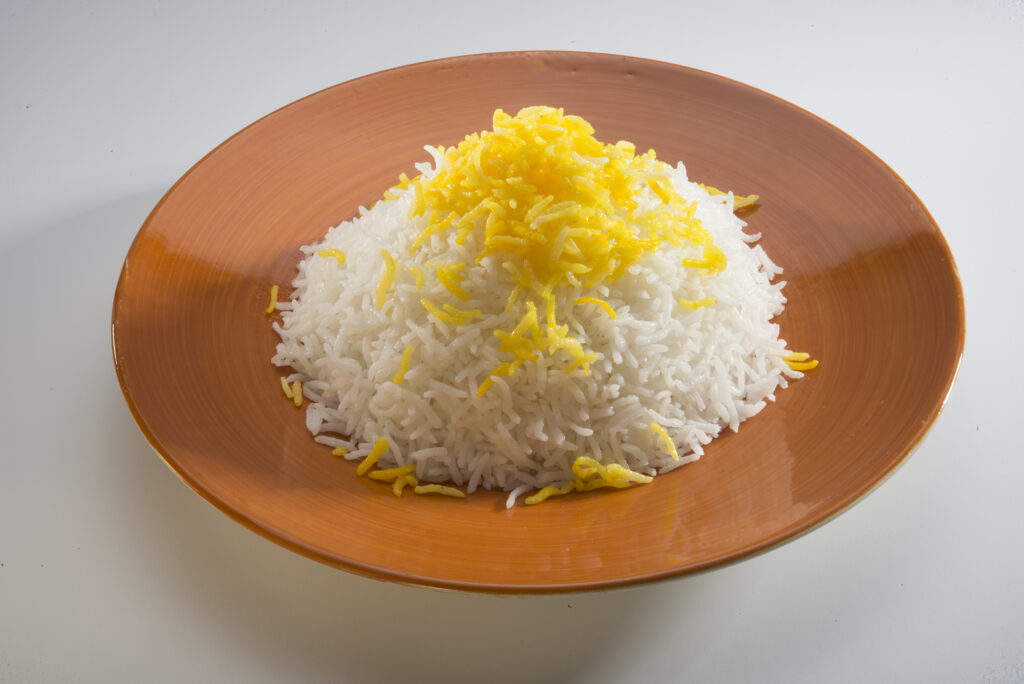Properties of rice; 10 incredible properties of rice for body health
The image of a fragrant pilaf that has just come out of the rice cooker is a heartwarming image! Rice is used as a main part of many meals in most parts of the world. More than half of the world’s population feeds on this important grain. Among the health properties of rice are immediate energy supply, regulation and improvement of bowel movements, stabilization of blood sugar levels and reduction of the aging process. Rice is also involved in providing vitamin B1 in the body. Join us, we want to give you more information about the properties of rice.

Properties of rice
Other properties of rice include boosting metabolism, skin care, aiding digestion, lowering high blood pressure, helping to lose weight, boosting the immune system and protecting against dysentery, cancer and heart disease.
These properties are found in more than forty thousand varieties of this grain. Rice is divided into two main categories: whole grains and white rice. Whole grains of rice, which are raw and pure, have a high nutritional value. But in white rice, bran is separated from the main grain, which reduces its nutritional value. People use different types of grains according to the cooking needs, availability and health properties of rice.
Rice is also divided according to grain length. Long grain rice is used in Asian cuisine, and American countries prefer medium and short grain rice.
1. Energy supply
Other properties of rice include providing energy to the body. Rice is rich in carbohydrates that act as fuel for the body; In addition, it is involved in the normal functioning of the brain. Carbohydrates are converted into functional energy in the body after fueling. Vitamins, minerals and organic matter in rice increase the function and metabolic activity of all organs of the body, which ultimately leads to increased energy levels.
2. Prevent obesity
Other properties of rice include preventing obesity. Rice grains are free of harmful fats, cholesterol and sodium. Rice is also known as an integral part of a proper diet. In fact, any food that provides the body with the nutrients it needs, without having any side effects, is a great health benefit. Very low levels of fat, cholesterol and sodium help reduce obesity and its associated complications.
3. Blood pressure control
The level of sodium in rice grains is very low and therefore very suitable for people with high blood pressure. Too much sodium in the body causes the arteries and arteries to constrict, increasing stress and strain on the cardiovascular system, which eventually leads to high blood pressure. It is also involved in diseases such as atherosclerosis, heart attack and stroke. However, eating foods that do not contain sodium will be good for your health.
4. Cancer prevention
Whole grains of rice, like brown rice, are high in insoluble fiber, which protects the body against various types of cancer. Many scientists and researchers believe that insoluble fiber is vital for the body’s care against the growth and metamorphosis of cancer cells. Fiber is also involved in the fight against colorectal cancer.
The properties of rice are not limited to the fiber in it. Rice contains natural antioxidants such as vitamin C, vitamin A and many phenolic compounds and flavonoids that have a similar function to antioxidants and help cleanse the body of free radicals. Free radicals are byproducts of cellular metabolism that damage organs and cause healthy cells to mutate into cancer cells. So by eating rice, you can increase the level of antioxidants in your body and prevent cancer.
5. skin care
Medical experts believe that using powdered rice topically can cure skin diseases. Ayurvedic physicians prescribe rice water to effectively treat inflamed skin surfaces. Phenolic compounds in brown and wild rice contain anti-inflammatory and anti-inflammatory properties and are also used to relieve itchy skin and redness of the skin. Oral or topical use of rice is effective in relieving many skin diseases. The antioxidants in rice also reduce the appearance of wrinkles on the surface of the skin and other signs of premature aging.
6. Prevent Alzheimer’s
Brown rice contains large amounts of nutrients that stimulate the growth and activity of neurotransmitters and ultimately prevent Alzheimer’s disease. Research has shown that different types of wild rice can stimulate neuroprotective enzymes in the brain that prevent the effects of free radicals and other dangerous toxins (risk factors for Alzheimer’s and dementia).
7. Diuretic and diuretic properties of rice
The diuretic properties of rice husk cause you to expel excess water; In addition it eliminates toxins such as uric acid.
Rice husk acts as an effective medicine for the treatment of dysentery (diarrhea with blood). Some people also believe that quarterly rice husk has diuretic properties. The Chinese believe that rice increases appetite, cures stomach ailments, and helps eliminate all digestive problems.
The diuretic properties of rice husk cause you to expel excess water; In addition it eliminates toxins such as uric acid. Rice husk also helps with weight loss, as about 4% of urine is excreted body fat. The high fiber content of rice husk also increases the regular activity of the intestines and protects the body against a variety of cancers. Another property of rice is that it reduces the risk of cardiovascular disease.
8. Improves metabolism
Rice is an excellent source of minerals and vitamins; Vitamin D, calcium, niacin, fiber, iron, thiamine and riboflavin are all present in these valuable seeds. These vitamins form the basis of the body’s metabolism, immune system health and overall function of the body’s organs. We know that vitamins are essential for many activities and functions of the body, and rice is one of the most important sources of these vitamins.
9. Strengthen cardiovascular health
Rice bran oil has antioxidant properties and helps strengthen the cardiovascular system by lowering the body’s cholesterol levels. We have already mentioned the benefits of fiber and low levels of fat and sodium to maintain a healthy cardiovascular system. Different types of wild and brown rice have better performance compared to white rice, because the husk of these grains has a lot of nutrients, which unfortunately, in the process of bleaching rice, is completely separated from the main grains.
10. Eliminate IBS (Irritable Bowel Syndrome)
Rice contains resistant starch that, once it reaches the intestines, stimulates the growth of beneficial bacteria that help the intestines move normally. These insoluble starches are also effective in reducing the effects of diseases such as irritable bowel syndrome and diarrhea.
According to the International Rice Research Institute in the Philippines, the nutritional value of rice should be increased as much as possible so that people around the world can enjoy its benefits. Given that rice is the largest grain in most parts of the world, it can improve the lives of the millions of people who consume it.
Researchers are now trying to increase the micronutrient value of these grains by combining traditional rice cultivation methods with modern biotechnology. They believe that rice cultivation with iron and zinc compounds is possible through bio-enhancement methods. This trend can also lead to high quality products that will naturally be pleasing to farmers and consumers.
11. Other properties of rice
Rice can prevent chronic constipation. The insoluble fiber in rice acts like a smooth sponge that moves easily and quickly along the intestines. Brown rice and whole grains are rich in insoluble fiber. Of course, do not forget that with fiber foods, you should consume more water to be able to eliminate constipation.
It is recommended that people with diabetes use brown rice instead of white rice because it has a lower glucose index. Consuming one serving of brown rice a day can provide all the manganese needed by the body, which is involved in converting carbohydrates and protein into energy. In addition, it helps the nervous system to function better and produce sex hormones.
